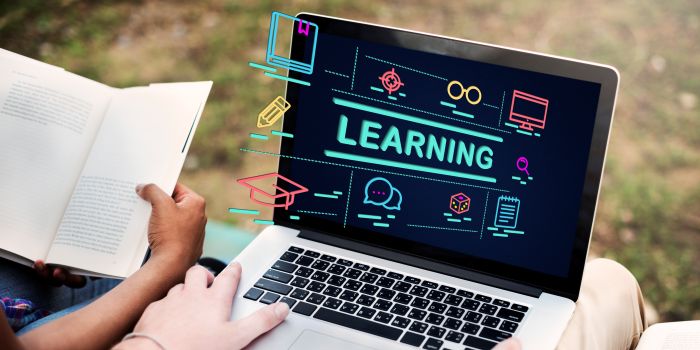Imagine a classroom where students are not just passive recipients of information but active participants in their own learning journey. This is the essence of Sosoactive Education—a transformative approach that merges real-life experiences with academic concepts. Gone are the days when education was confined to textbooks and lectures. Today, we dive into an engaging world where learning happens outside traditional boundaries, fostering creativity and critical thinking. In this blog post, we’ll explore how Sosoactive Education is redefining the way we think about teaching and learning, making it more relevant to our daily lives while preparing students for a rapidly changing world. Join us as we uncover its advantages, successful implementations, and tips for integrating this innovative method into schools and homes alike!
The Advantages of Real-Life Engagement in Learning
Real-life engagement in learning transforms the educational landscape. It brings theory to life, allowing students to see practical applications of their knowledge. This connection increases motivation and curiosity.
Students involved in real-world experiences develop critical thinking skills. They learn how to analyze situations and solve problems on the spot. These are essential skills for today’s fast-paced world.
Collaboration also flourishes in engaged learning environments. Students work together on projects, fostering teamwork and communication skills vital for future careers.
Moreover, real-life engagement enhances retention rates. When learners connect emotionally with content through hands-on experiences, they remember it longer.
Exposure to diverse perspectives enriches education. Interacting with community members or professionals broadens horizons, making lessons more relevant and impactful.
Implementing Sosoactive Education in Schools
Implementing Sosoactive Education in schools begins with a shift in mindset. Educators must embrace the idea that learning extends beyond textbooks and classrooms.
Integrating real-life experiences can take many forms. Field trips, community projects, or guest speakers from various professions bring lessons to life. These activities allow students to see the practical applications of their studies.
Collaboration among teachers is essential for success. Sharing resources and strategies fosters an environment where Sosoactive principles thrive. Professional development programs can help educators learn effective engagement techniques.
Support from school administration also plays a crucial role. By prioritizing innovative teaching methods, leaders can create policies that encourage experimentation with real-world learning.
Involving parents strengthens this initiative further. Engaging families creates a supportive network that reinforces the value of experiential education at home and beyond.
Success Stories of Schools Using Sosoactive Education
Schools across the globe are experiencing remarkable transformations through Sosoactive Education. One notable example is a high school in San Francisco, where students engage with local environmental projects. This hands-on approach has fostered a deeper understanding of ecology and sustainability.
In another instance, an elementary school in Chicago introduced community service as part of its curriculum. Students not only learned about social responsibility but also built strong connections within their neighborhoods. The impact was profound—academic performance improved alongside heightened engagement.
A rural school in Texas utilized local history for lessons on cultural heritage. By collaborating with nearby museums, students crafted presentations that brought their town’s past to life.
These stories highlight how integrating real-life experiences into education transforms learning environments and enriches student lives across various settings. Such innovative approaches show the potential of Sosoactive Education to inspire future generations.
Tips for Parents and Educators to Incorporate Real-Life Engagement in Learning
Encouraging real-life engagement starts with curiosity. Parents and educators can stimulate interest by introducing hands-on projects that connect to daily life. Simple tasks like cooking or gardening can teach math, science, and teamwork.
Field trips offer valuable experiences too. Visiting museums or local businesses can spark discussions about community roles and history. Use these outings as a springboard for deeper exploration back in the classroom or at home.
Incorporate technology wisely. Virtual reality apps allow students to explore different cultures or historical events without leaving their homes. This kind of immersive learning makes lessons memorable.
Create opportunities for collaboration between students and local organizations. Service projects not only help the community but also cultivate empathy and responsibility among learners.
Use storytelling to connect concepts with personal experiences. Encourage children to share their stories related to topics being studied; it fosters connection and understanding in a powerful way.
Future of Education: How Sosoactive is Changing the Game
The future of education is evolving rapidly, and Sosoactive Education stands at the forefront of this transformation. By integrating real-life experiences into learning, it cultivates a more immersive educational landscape.
Students are no longer passive recipients of information. Instead, they engage actively with their surroundings and communities. This hands-on approach not only boosts retention but also fosters critical thinking skills essential for today’s world.
As technology advances, Sosoactive methods will likely incorporate digital platforms that enhance real-world interactions. Virtual reality field trips or online collaborations with experts in various fields could become commonplace.
Educators will play a pivotal role in this shift by adopting flexible teaching strategies that prioritize experiential learning. They’ll guide students to explore challenges creatively while emphasizing collaboration over competition.
This paradigm shift promises to create well-rounded individuals prepared for an ever-changing global environment. The impact on personal growth and societal contributions could be profound as we embrace these innovative approaches to education.
Conclusion
Sosoactive Education is more than just a trend; it represents a pivotal shift in how we approach learning. By focusing on real-life engagement, this educational model not only enriches students’ experiences but also prepares them for the complexities of today’s world.
The success stories from schools that have embraced Sosoactive Education reveal its potential to transform classrooms into dynamic environments where knowledge is applied practically and meaningfully. Parents and educators play a vital role in this transformation by incorporating engaging, real-world activities into daily learning.
As we look ahead, the future of education seems bright with initiatives like Sosoactive at the forefront. It encourages curiosity, collaboration, and critical thinking—skills essential for navigating an ever-evolving landscape.
Embracing Sosoactive Education can help redefine our understanding of what effective learning truly means, ensuring that students are equipped not just academically but as well-rounded individuals ready to face the challenges of tomorrow.






